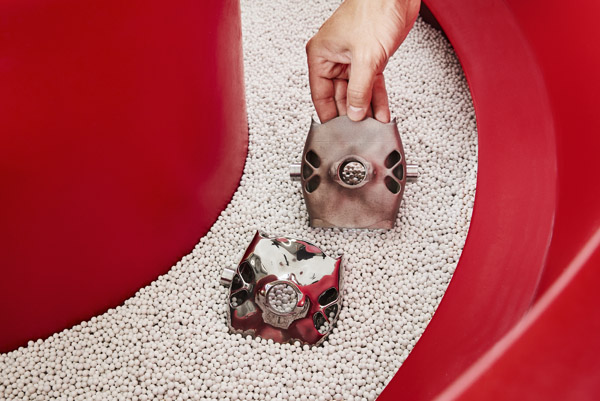Walther Trowal has developed the AM Post Process vibratory finishing systems for the finishing of additively manufactured workpieces. They are specially adapted to the surface roughnesses that are typical for additive manufacturing — for example, the staircasing effect, markings of support structures and caked-on powder residues.
In contrast to electrochemical processes, the AM Post Process produces smoothness and gloss of the components with their complex, often bionic shapes in just one or two process steps.
The TRT 83/37 trough vibrator, which the company is presenting at the trade show, has been specially designed by the company for workpieces in small batch sizes. The workpiece is placed in the grinding wheel bed, and the vibration of the trough creates a relative movement between the component and the grinding wheels, producing a smooth, homogeneous surface.
“We originally designed the compact, easy-to-operate machine for cleaning metallic workpieces and mass-produce it for this market. This explains the low price. For higher quantities or for workpieces that cannot be processed in a loose abrasive bed, we manufacture the AM 2 circular vibrator.”
- Christoph Cruse, Sales Director
In the circular vibrator AM 2, which was specially developed for additive manufacturing, the workpieces are fixed to the bottom of the work bowl. This creates an intensive relative movement between the workpieces and the grinding wheels. An important advantage of the clamping is that the individual workpieces do not touch each other.
The vibrators have three unbalanced motors whose movements are superimposed. The result: the grinding wheels treat the surface evenly and gently. Fine ridges are not broken, and the workpiece contours are preserved. In addition, the grinding wheels also reach the difficult-to-access inner contours of the components and undercuts typical of additive manufacturing.

















